Camille Pissarro - the father figure of the Impressionists Part 1
Today and tomorrow, we continue our series looking at the lives of the French Impressionist painters, and, in particular, how they interacted with each other.
We will look at Camille Pissarro, who was a painter and printmaker, and a key figure in the history of Impressionism.
He was nine years or more older than the other Impressionists, and so became something of a father figure to the group. By age thirty-one he was prematurely grey, with a long white beard, which further added to the nickname of “Father Pissarro”.
Pissarro was instrumental in forming, and holding together, this very loose-knit, diverse group of artists, despite their very different, sometimes volatile, personalities.
He was a quiet leader who embraced a number of art styles over his career, from the Classical to Impressionism, Neo-Impressionism and Pointilism. He was always open to exploring new ideas and trends. Perhaps you will be able to notice how his styles changed, almost decade by decade, as we follow his career spanning more than 50 years.
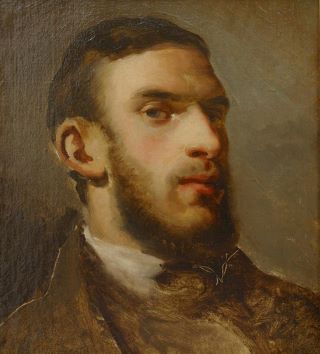
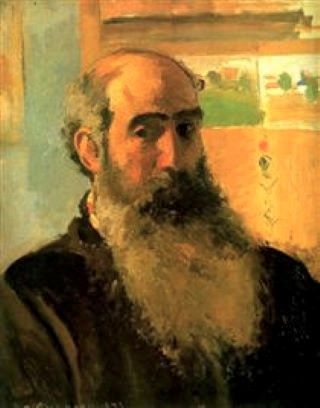
Camille Pissarro, whose full name was Jacob-Abraham-Camille Pissarro, was born to a Jewish family on the 10th of July, 1830, on the island of St. Thomas, in the Danish West Indies, which is now part of the US Virgin Islands, in the Caribbean.
He was sent to boarding school in Paris when he was 12, and there developed his love of art, sketching and drawing and visiting the Louvre whenever he got the chance.
He was summoned home to work in the family’s manchester business when he was 17, and he lived above the shop with his family. He found this environment stifling and eventually the family gave in to allow him to pursue his passion for art.
In 1852, at age 21, he threw off the shackles and went to Venezuela with a fellow artist. They stayed there for a few years, painting and drawing street life and rural landscapes, and enjoying the tropical, bohemian lifestyle.
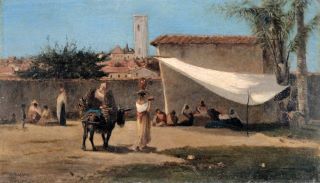
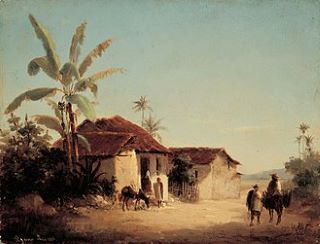
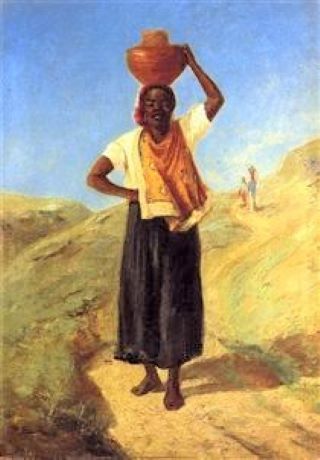
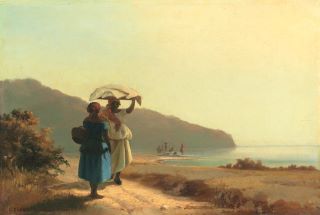
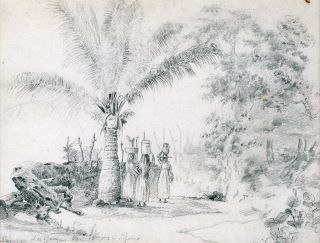
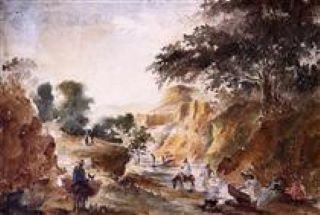
In 1855, he came back to Paris, where he worked as assistant to Danish painter Anton Melbye and studying paintings by other artists such as Courbet, Charles-François Daubigny, Jean-François Millet, and Corot. He also enrolled in various classes at schools such as École des Beaux-Arts and the Accadémie Suisse. He exhibited with The Salon for the first time in 1859, which then was the only way of getting some exposure, becoming “known” and earning commissions.
But whilst his work was accepted and exhibited at The Salon almost every year until 1868, Pissarro was finding both their teaching methods and the required subject matter of only classical, religious or mythological scenes rather stifling and restrictive. He was also dissatisfied with the “judge and jury” system of choosing the paintings to be shown.
We know this was a similar thread which characterised all the Impressionists in their early years, and thus sparked the development of this new movement.
In 1859, while attending the free school, the Accadémie Suisse, (the Swiss Academy), Pissarro became friends with a number of younger artists of similar views. Among them were Claude Monet and Paul Cézanne. Cézanne's work had been mocked, and it is recorded that Cézanne "never forgot the sympathy and understanding with which Pissarro encouraged him”, and they stayed lifelong friends.1
Around this time, Pisarro fell in love with Julie Vellay, who was his mother’s maid and the daugher of a wine maker. His family were horrified at this low bred alliance, and so they did not marry until June, 1871, in England. (By that stage they had 2 children, Lucien and Jeanne, and a third on the way).
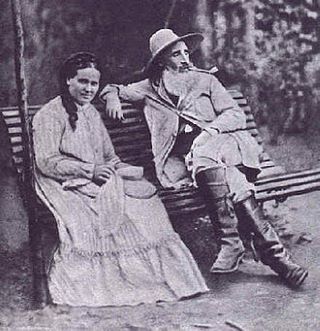
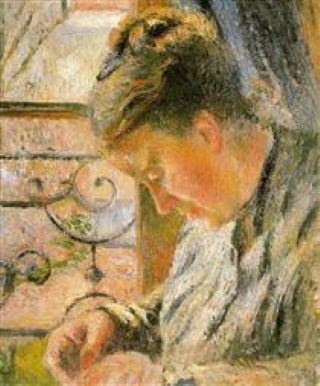
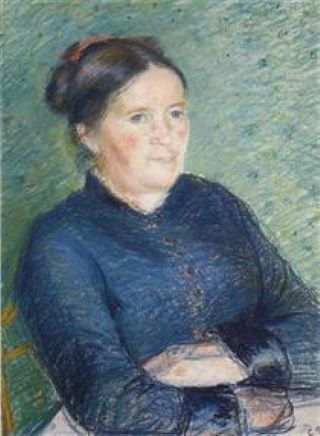
In 1866, Pissarro and his family settled in Pontoise, (33 kilometres nort west of Paris), then moved to Louveciennes (25 kilometres due west of Paris), in 1869. After living in the heat of the West Indies and Venezuela, Pissarro loved the picturesque, quiet countryside of these towns. Here are some of the many scenes he painted of the area over the latter 1860s to early 1870s:
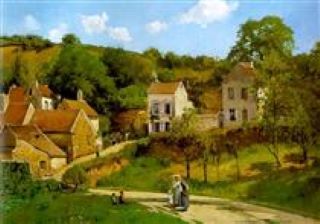
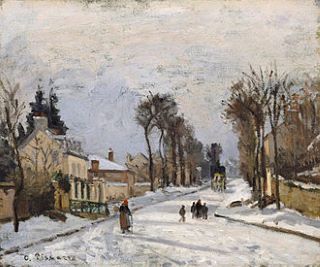
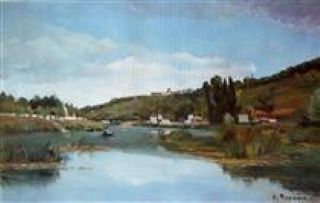
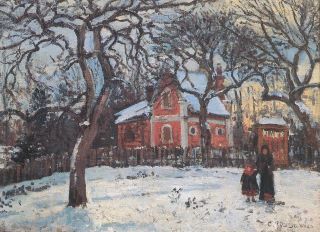
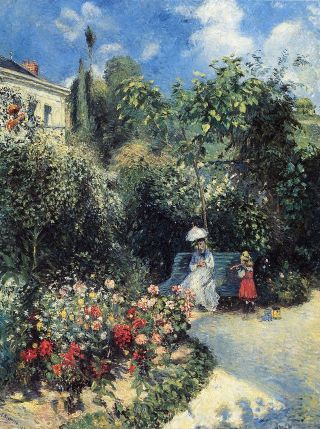
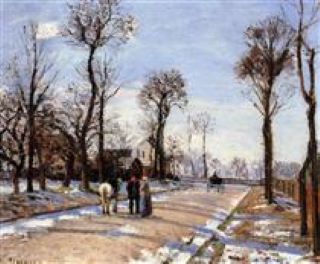
Pissarro always kept an apartment in Paris and was often to be found at the Café Guerbois. It is there that he met Manet in 1866. Whilst he was a quiet man, he was also quite sociable. This cafe became a gathering place for many of the Impressionists, including Monet, Renoir, Sisley, Bazille, Manet, Degas, Gaughin and Cezanne. No doubt there were many enthusiastic discussions about style, light and colour!
Describing the discussions at the Cafe Guerbois, Monet later wrote, “Nothing could be more interesting than these causeries with their perpetual clash of opinions. They kept our wits sharpened, they encouraged us with stores of enthusiasm that for weeks and weeks kept us up until the final shaping of the idea was accomplished. From them we emerged tempered more highly, with firmer will, with our thoughts clearer and more distinct.”2
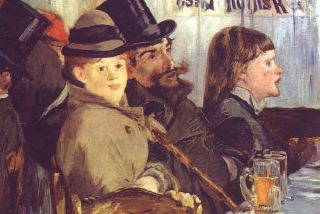
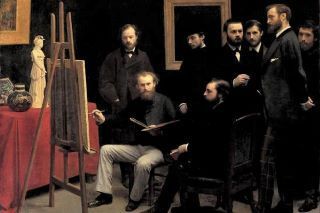
In 1870, the Franco Prussian war began, and as Pissarro was a Danish citizen, he was unable to join the army and so fled to London with his family. Monet had also moved to London, and there they continued painting, influenced by the landscapes of Turner and Constable.
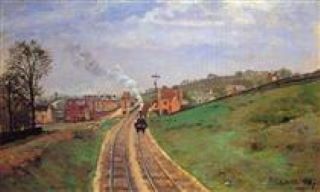
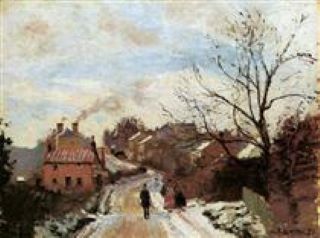
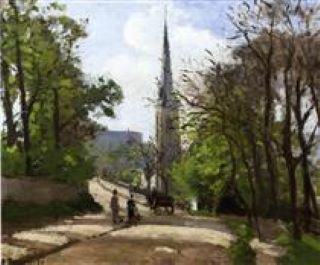
Tomorrow we shall return to look at the true of the growth of Impressionism largely through Pissarro's involvement in establishing the breakaway group.
But today we leave you with a small puzzle, just for fun! Do you know which photo below is Claude Monet and which photo is Camille Pissarro? I'll tell you the answer tomorrow!
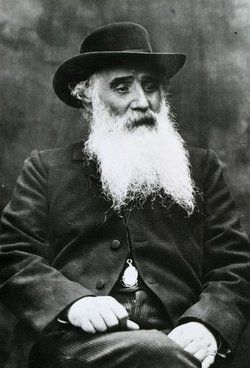

Footnotes
- Courtesy of Wikipedia
- Courtesy of cafeguerbois.com
